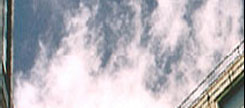



|
 Matrix of doctorate present areas of research Matrix of doctorate present areas of research
| Products
|
 |
|
Sub-areas
|
Theoretical fundamentals
|
Method
|
Tools
|
 |
|
Interaction with the customer
in the design processes.
|
Management of the processes of development of products; The relational Marketing and the direct Marketing; Theories on the evolution of Marketing.
|
Combined approach between
bibliographic research and
empirical investigation.
|
Case studies
and action research.
|
 |
|
Bionics and Design.
Evolution and Basic Design.
Methodological design approach.
|
Comparative study of the different methods of design with a matrix of bionic kind; Theory of evolution and analogical models.
|
Historic and bibliographic
analysis;
Mapping of the different
research centres.
|
Case History,
Interviews and visits.
|
 |
|
Light Design for the space.
|
Innovation, technological transfer; Design of high complex products for small series.
|
Definition of a methodological design model deriving from the empirical elaboration of projects.
|
Research Database, NASA procedures and protocols.
|
 |
Ergonomics and Design
The evolution of ergonomics.
|
Innovation, technological transfer; Design of high complex products for small series.
|
Ergonomics; Analysis of the
interventions of the international
congresses of the IEA.
|
Case studies.
|
 |
|
The Local-Global relation:
New challenges and design
Opportunities. Brazil as a local
case.
|
Theories of Globalization;
History of Industrial Design;
Technological transfer.
|
Literature research; Interviews;
Researches in universities,
government organisms,
confederation of the industries
and Institutes of intellectual
properties and patents.
|
Data Collection,
Case studies
|
 |
|
Instruments and tools for the
preparation and the conservation
of food,
in depth analysis of the food in
the extreme environments.
|
Science and technology of the
Alimentation;
NASA research on “space food”.
|
Analysis of the state of the art;
Identification of the research
centres and the scientific
community; building of scenarios.
|
Bibliographic and
web research,
action research.
|
 |

| Systems
|
 |
|
Sub-areas
|
Theoretical fundamentals
|
Method
|
Tools
|
 |
|
The definition of new platforms of
design, production, distribution
and consumption of goods.
Design of the convergences.
|
Innovation system;
Participated design;
Mass customisation.
|
Practice oriented research
integrated to the EU funded
research "HiCS - highly
customised solutions of food for
persons with reduced mobility”.
|
Case studies
of participated design,
scenario planning.
|
 |
|
Research programs and
methods in Industrial Design
doctoral education.
|
Nature of Design knowledge;
Philosophical context and
foundations of Design research;
Origins of doctoral programs
in design and their traditional
methodologies; The form and
structure of research methods
in design
|
Collection, comparison,
analysis and interpretation
of the current doctoral
programs in design and
research methods.
|
Educational
landscape, ranking
systems and papers
of international
conferences.
|
 |
|
Service Design.
|
Marketing and management of
services (Richard Normann,
G. Negro, etc.); Information
technology and social change
(M. Castells, P. Levy, A. Gros,
etc.); Design of the interaction
(Anceschi, Laurel B., etc).
|
Identification of active design
surveys on the service theme;
Comparative collection of the
existing tools of service evaluation.
|
Case studies and
action research.
|
 |
|
Tools for Design education,
long life learning and on-line
education.
|
Learning and mental disciplines, cognitive revolution (H.Gardner); Social uses of technology, ways
of knowledge, collective
intelligence (P. Levy, M. Authier,
De Kerckhove);
Mapping of actual training
systems (Educational researcher,
review of research in education,
european journal of education,
etc).
|
Mapping of research centres and training offer (open, on distance, on line)
|
Bibliographical
Research and
case studies
|
 |

| Communication
|
 |
|
Sub-areas
|
Theoretical fundamentals
|
Method
|
Tools
|
 |
|
Web design, Information
Architecture, Usability.
|
Gardner: Theory of the multiple intelligences; De Kerckhove: Connective intelligence; Principles of the architecture of the web; Nielson: Web usability; Gannon: Cultural metaphors.
|
Analysis of the training offer in on-line and off-line web design, mapping of the research centres.
|
From project to usability test.
|
 |
|
Visual Design, complex
communicative systems,
co-ordinated image.
|
The communication for the museum system; Theories on the models and forms of communicating; The immaterial under existing communicative protocols; J.-M. Floch: Visual identities; T.Maldonado: On the mark; G. Anceschi: Emblem, mark, visibility in progress; G. Celant: Mediamuseum.
|
Identification, analysis and
mapping of the most significant
cultural institutions; Functional
“base research” for design
problems settings and solutions;
Definition of solutions
and guide-lines for the
development of specific
communicative acts or artefacts.
|
IT (Information Technology).
HCI (Human Computer
Interaction).
|
 |
|
User design: Miniaturization and survey of ultra-wearable interfaces (physical and graphical) for access and management of electronic data.
|
User design: Miniaturization and survey of ultra-wearable interfaces (physical and graphical) for access and management of electronic data.
|
Ergonomic inquiry on Human Computer Interaction, case studies
|
Focus group, usability test and
mock-ups
|
 |


|
|





























